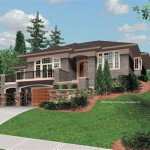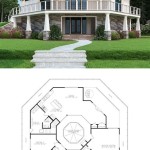Plans for Purple Martin Houses provide blueprints and instructions for constructing specialized nesting structures designed to attract and accommodate Purple Martin colonies. These elaborate houses, typically mounted on poles or towers, offer a safe and controlled environment for these beneficial birds, fostering their populations and promoting their ecological benefits.
Purple Martins, known for their aerial acrobatics and insect-eating prowess, are highly valued for their role in natural pest control. By providing well-planned and well-built houses, landowners and conservationists can support these migratory songbirds, creating a win-win situation for both the birds and the surrounding ecosystem.
This article will delve into the various aspects of Plans for Purple Martin Houses, exploring their design principles, construction techniques, and placement considerations. By understanding these plans, individuals can contribute to the conservation and well-being of Purple Martin colonies, enhancing their local environment and fostering a thriving natural ecosystem.
When considering Plans for Purple Martin Houses, several important points should be kept in mind:
- Proper Dimensions
- Compartment Size
- Ventilation and Drainage
- Predator Protection
- Durable Construction
- Pole or Tower Placement
- Colony Monitoring
- Regular Maintenance
Adhering to these guidelines ensures the creation of suitable nesting environments that meet the specific needs of Purple Martins and promote their successful colonization and breeding.
Proper Dimensions
Proper dimensions are crucial when designing and constructing Purple Martin houses to ensure the comfort, safety, and nesting success of the birds. The overall size of the house, as well as the dimensions of individual compartments, should adhere to specific guidelines to meet the unique needs of Purple Martins.
The external dimensions of a Purple Martin house can vary depending on the desired capacity and number of compartments. However, it is generally recommended that the house be at least 24 inches tall and 18 inches wide, providing ample space for multiple nesting pairs.
The size of individual compartments is equally important. Each compartment should measure approximately 6 inches wide, 6 inches tall, and 6 inches deep. This specific size has been found to provide an optimal nesting space for Purple Martins, allowing them to move comfortably, build their nests, and raise their young.
Maintaining proper dimensions throughout the house ensures that Purple Martins have sufficient room to maneuver, incubate their eggs, and care for their chicks. Adequate space also helps prevent overcrowding, which can lead to competition for resources and increased stress levels among the birds.
Compartment Size
The size of each compartment within a Purple Martin house is a critical factor in attracting and accommodating these birds. Compartments that are too small can cause overcrowding, competition for nesting space, and reduced nesting success. Conversely, compartments that are too large can make the house less attractive to Purple Martins and may encourage other, less desirable species to nest in the house.
The ideal compartment size for Purple Martins is 6 inches wide, 6 inches tall, and 6 inches deep. This size provides ample space for a pair of Purple Martins to build their nest, incubate their eggs, and raise their young. It also allows for proper ventilation and drainage, which are important for the health and well-being of the birds.
When designing and constructing a Purple Martin house, it is important to ensure that all compartments are of uniform size. This will help to prevent competition among the birds for the best nesting sites and will ensure that all pairs have an equal chance of successfully raising their young.
In addition to the size of the compartments, it is also important to consider the number of compartments in the house. The number of compartments will depend on the size of the house and the desired capacity. However, it is generally recommended to provide at least six compartments in a Purple Martin house. This will give the birds plenty of options to choose from and will help to prevent overcrowding.
Ventilation and Drainage
Proper ventilation and drainage are essential for the health and well-being of Purple Martins and should be carefully considered when designing and constructing a Purple Martin house. Good ventilation helps to circulate fresh air throughout the house, preventing the buildup of stale air and moisture, which can lead to respiratory problems and other health issues for the birds.
Adequate drainage is equally important, as it helps to prevent water from accumulating in the house, which can lead to mold and mildew growth. Mold and mildew can not only damage the house but can also pose health risks to the birds. To ensure proper ventilation and drainage, several design features should be incorporated into the Purple Martin house:
- Ventilation Holes: Ventilation holes should be placed near the top and bottom of each compartment to allow for air circulation. These holes should be approximately 1 inch in diameter and should be covered with wire mesh to prevent birds from entering the house.
- Drainage Holes: Drainage holes should be placed in the floor of each compartment to allow water to drain out of the house. These holes should be approximately 1/2 inch in diameter and should be covered with wire mesh to prevent birds from escaping.
- Slanted Roof: A slanted roof helps to shed water and prevent it from accumulating on the roof of the house. The roof should be sloped at an angle of at least 30 degrees.
By incorporating these design features into the Purple Martin house, you can help to ensure that the house is well-ventilated and well-drained, providing a healthy and comfortable environment for the birds.
Predator Protection
Protecting Purple Martins from predators is an important consideration when designing and constructing a Purple Martin house. Predators such as snakes, raccoons, cats, and owls can pose a significant threat to Purple Martins, especially during nesting season. To protect the birds and their young, several predator protection measures should be incorporated into the house:
Pole or Tower Placement: The placement of the Purple Martin house on a pole or tower can help to deter predators. The pole should be at least 12 feet tall and should be placed in an open area away from trees or other structures that predators can use to climb or jump onto the house.
Nest Box Design: The design of the nest box can also help to protect Purple Martins from predators. The entrance hole to the nest box should be small enough to prevent predators from entering, but large enough to allow the Purple Martins to enter and exit easily. The nest box should also be made of durable materials that can withstand predator attacks.
Predator Guards: Predator guards can be installed on the pole or tower to prevent predators from climbing up and reaching the nest box. Predator guards can be made of a variety of materials, such as metal, plastic, or wire mesh.
Nest Box Monitoring: Regular monitoring of the nest box can help to detect and deter predators. If predators are found near the nest box, steps should be taken to remove them or prevent them from accessing the nest box.
By incorporating these predator protection measures into the Purple Martin house, you can help to protect the birds and their young from predators, increasing their chances of nesting success.
Durable Construction
The construction of a Purple Martin house should be durable to withstand the elements and provide a safe and secure nesting environment for the birds. Several factors contribute to the durability of a Purple Martin house:
- Material Selection: The materials used to construct the house should be durable and resistant to rot, decay, and insect damage. Cedar, cypress, and redwood are all excellent choices for Purple Martin houses due to their natural resistance to these elements.
- Construction Methods: The house should be constructed using strong and sturdy joinery techniques. Nails, screws, and bolts should be used to secure all components of the house, and the joints should be reinforced with glue or caulk to prevent leaks and drafts.
- Roofing: The roof of the house should be made of a durable material that is waterproof and can withstand strong winds. Asphalt shingles, metal roofing, or cedar shakes are all good choices for Purple Martin houses.
- Predator Protection: The house should be constructed with predator protection features to prevent predators from accessing the nest compartments. This may include installing predator guards on the pole or tower, using a nest box with a small entrance hole, and placing the house in an open area away from trees or other structures that predators can use to climb or jump onto the house.
By using durable materials, employing sturdy construction methods, and incorporating predator protection features, you can ensure that your Purple Martin house will withstand the elements and provide a safe and secure nesting environment for the birds for many years to come.
Pole or Tower Placement
The placement of the Purple Martin house on a pole or tower is an important consideration that can impact the success of the colony. The ideal location for the house is in an open area away from trees or other structures that predators can use to climb or jump onto the house. The pole or tower should be at least 12 feet tall to provide the birds with a good view of the surrounding area and to help deter predators.
The pole or tower should be made of a durable material such as metal or wood and should be securely anchored in the ground. The base of the pole or tower should be at least 4 feet deep and should be set in concrete to prevent the structure from being knocked over by strong winds or predators.
When choosing a location for the Purple Martin house, it is important to consider the prevailing wind direction. The house should be placed so that the entrance holes are facing away from the wind to prevent rain and cold air from blowing into the compartments.
It is also important to consider the amount of sunlight that the house will receive. Purple Martins prefer to nest in houses that receive at least 6 hours of direct sunlight per day. However, the house should not be placed in an area that is exposed to the hot afternoon sun, as this can make the house too hot for the birds and their young.
Colony Monitoring
Regular monitoring of the Purple Martin colony is an important part of maintaining a healthy and productive nesting environment. Monitoring allows you to track the progress of the colony, identify any problems, and take corrective action if necessary.
Colony monitoring should begin as soon as the birds arrive in the spring. This will allow you to assess the size of the colony, the condition of the birds, and the overall health of the nesting site. During the nesting season, you should monitor the colony at least once a week to check for any signs of problems, such as predators, parasites, or disease.
One of the most important aspects of colony monitoring is to keep track of the number of eggs and chicks in each nest. This information can be used to assess the productivity of the colony and to identify any nests that are failing. To monitor the eggs and chicks, you can use a small mirror or a flashlight to look inside the nest compartments. Be careful not to disturb the birds or damage the nests.
If you find any problems during your colony monitoring, it is important to take corrective action as soon as possible. This may involve removing predators, treating parasites, or providing additional food or water. By taking prompt action, you can help to ensure the success of the Purple Martin colony.
In addition to the regular monitoring during the nesting season, you should also inspect the Purple Martin house and the surrounding area in the fall and winter. This will allow you to identify any damage that needs to be repaired and to remove any debris that may have accumulated around the house.
Regular Maintenance
Regular maintenance is essential to keep your Purple Martin house in good condition and to ensure that it provides a safe and healthy nesting environment for the birds. Here are some important maintenance tasks that should be performed on a regular basis:
- Clean the house: The Purple Martin house should be cleaned thoroughly at least once a year, preferably in the fall after the birds have left for their wintering grounds. To clean the house, remove all of the nesting material and debris, and wash the inside and outside of the house with a mild soap and water solution. Be sure to rinse the house thoroughly and allow it to dry completely before putting it back up.
- Inspect the house for damage: While you are cleaning the house, inspect it carefully for any damage. Look for cracks, holes, or other signs of wear and tear. If you find any damage, repair it as soon as possible to prevent it from getting worse.
- Check the predator guards: The predator guards on the pole or tower should be checked regularly to make sure that they are in good condition and that there are no gaps that predators could use to access the house. If you find any damage to the predator guards, repair it as soon as possible.
- Remove old nests: Old nests should be removed from the house each year to prevent the buildup of parasites and diseases. To remove the old nests, simply reach into the nest compartments and pull them out. Be careful not to damage the house or disturb any birds that may still be nesting.
By performing these regular maintenance tasks, you can help to ensure that your Purple Martin house remains in good condition and that it provides a safe and healthy nesting environment for the birds for many years to come.










Related Posts








